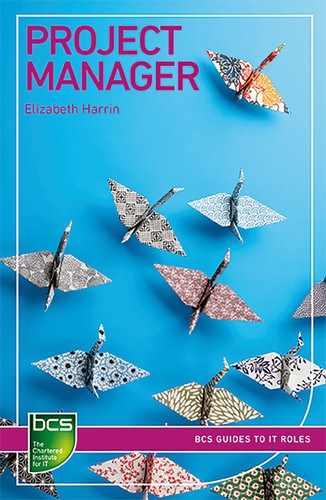Agile A way of delivering projects that encompasses various approaches and methods that are incremental, iterative and with a strong focus on delivering prioritised user requirements.
Burn-down chart A way of displaying progress and value delivered in Scrum and agile project management.
Change management The way we facilitate the shift from current practice to new practice in order to achieve a benefit.
Configuration management The discipline of having control over who is doing what to what, and which version is the most current. Involves creating, maintaining and managing changes to the products you are delivering.
Dependencies The way tasks link to each other on a project schedule – for example, tasks needing to be completed in sequence or in parallel.
Development team Self-organising, cross-functional team responsible for delivering the work at the end of an agile iteration.
Gantt chart Horizontal bar graph showing project tasks and their duration.
Handover The process of passing what the project has delivered to the operational teams who will be responsible for managing and supporting it once the project is closed.
Kanban An Agile approach using visual planning to manage project tasks.
Portfolio The sum of all projects and programmes being carried out in an organisation department, or division, often including business-as-usual activity too.
Product Owner Key member of the Agile project team; the main project stakeholder. The person responsible for the requirements and priorities for the project.
Programme A group of related projects that often use a similar group of resources and will together achieve an overall common objective or set of related objectives.
Project A unique series of activities that together have a common goal and that must be completed within a defined timescale, a specific budget and to a defined specification.
Project board A group of people who form the decision-making body on the project, including the project manager, project sponsor, key supplier and other senior managers who hold particular influence over the resources, budget or success of the project. Also known as a ‘steering group’.
Project management The management framework and activity required to get a project going and to keep it going until it achieves its agreed objectives.
Project sponsor The person accountable for the successful delivery and benefits of the project through the realisation of the business case.
Release The distribution of a version of a software product. Normally refers to making the new version ‘live’ in the production environment.
Retrospective A meeting held at the end of an iteration on an Agile project, to reflect on what worked and consider lessons to apply to future iterations to improve the way the team is working and the outputs.
Scrum An Agile framework for getting work done using sprints.
Scrum Master A servant leadership role that supports, coaches and mentors the Scrum team.
Stakeholder Someone who is affected by, or has an interest in, or believes they have an interest in, the delivery and outcomes of a project.
Standard A document produced by the consensus of a group of experts and approved by a recognised body. It includes the rules and guidelines aimed at helping individuals and teams deliver consistently and in a structured way – for example, A Guide to the Project Management Body of Knowledge (PMBOK® Guide) – sixth edition (a standard from PMI).
Waterfall A non-Agile way of managing project work where the requirements and scope are defined as fully as possible at the outset.
